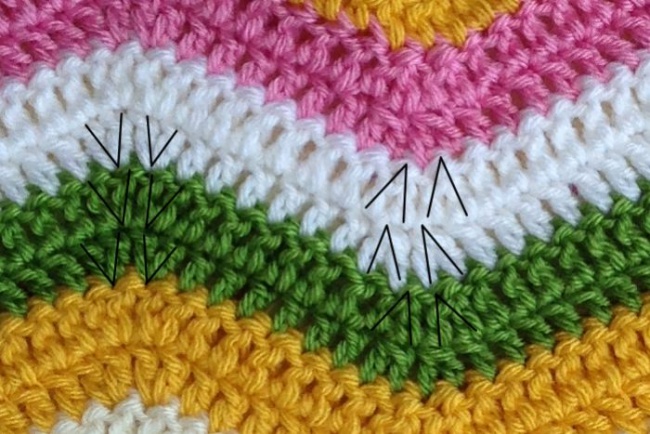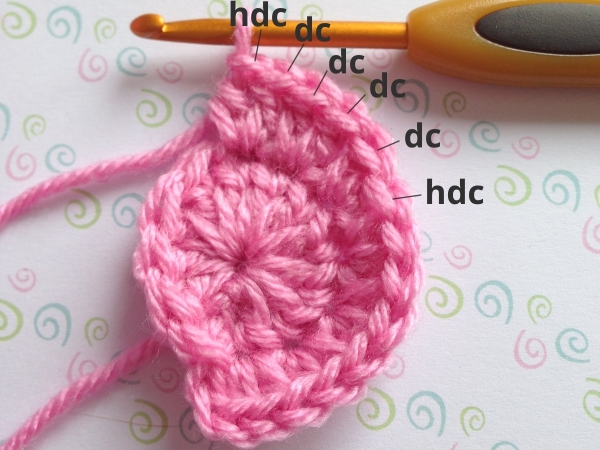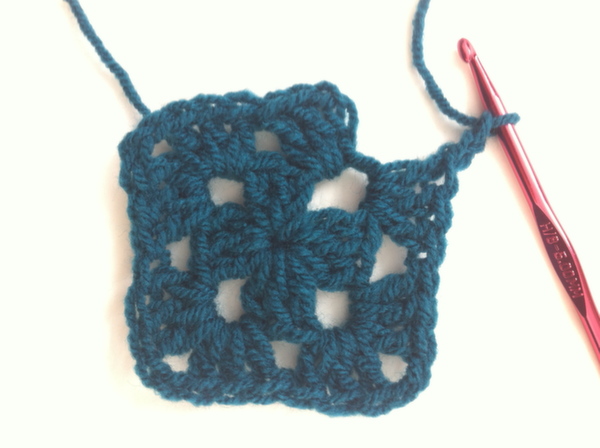If you want to expand beyond creating square and rectangular crochet projects, then you need to learn how to increase crochet and decrease crochet stitches.

From Tamara Kelly’s Crochet Essentials: Increases & Decreases class
Why increase and decrease?
Increasing and decreasing the number of stitches in your work are the primary ways to achieve shaping, allowing you to make all kinds of items.
Today, we’re going to focus specifically on increasing, but you can read about about decreasing here.
Crochet increases in rows
The best place to begin when learning to increase is working in rows with basic crochet stitches.This is true whether you’re using single crochets, half double crochet, double crochet, etc.

Image via Bluprint blogger Kathryn Senior
The technique
In almost all cases, you will crochet two stitches into the same space. Simply work a stitch as normal, and then work a second stitch right next to it, inside the same space.
When to work increases in rows
At the beginning & end of the row
You’ll most commonly find increases in rows at the first and last stitches of a row, working the rest of the row as normal.
For example, let’s say you’ve worked a row of 10 dc stitches and you want to increase in the next row. You’ll make 2 dc stitches in the first stitch, 1 dc in each of the next 8 stitches and 2 dc in the final stitch — a total of 12 stitches in the row
If you want to increase again, then you’d make 2 dc stitches in the first stitch, 1 dc in each of the next 10 stitches and 2 dc in the final stitch for a total of 14 dc stitches in the new row — and so on.
In the middle of the row
Sometimes, however, you’ll increases in the center of rows. The most common example of this will be found when making chevron crochet patterns.
Crochet increases in the round
Now that you understand the basics of a crochet increase in rows, let’s talk about increasing in the round.

Image via Kathryn Senior
The technique
The good news is that making increases in the round is essentially the same as in row — you just make two stitches into one space. However, things get tricky when it comes to shaping.
The math behind increasing in the round
There’s a bit more math involved when working in the round, especially when making perfect circles. Without the right number of increases, your circle will fail to lay flat.
If you make a circle and then continue in rounds without increasing, you will start to get a bowl shape — ideal for making this hats and baskets.
It’s essential to begin with right number of stitches — and the number varies depending on the height of the stitch (single crochet vs. double crochet, for example). From there, you’ll work increase into each stitch in the first round, then you’ll increase in every other stitch of the second round, then in every third stitch of the next round and so forth.

Image via Kathryn Senior
When increasing in the round, you may notice a seam where the rounds are joined. You can hide this in a few ways:
- Fasten off at the end of each round and re-join the yarn with a standing stitch.
- Shift the increases one stitch over with each new round, to stagger the increases (get a full tutorial here). As a bonus, this helps keep the circle shape instead of making it turn into a hexagon.
Crochet increases for squares
Working in the round doesn’t always mean that you are crocheting circles. You can crochet squares in the round as well.

Image via Kathryn Vercillo
The technique
When crocheting squares, you need to make increases in all four corners of the square so that you get even growth around each round. This is often done by doubling up your pattern in the corners.
Example: granny squares
The classic granny square provides a solid example of this. Working across the sides, you make clusters of 3 dc stitches; in the corners, you make two 3-dc clusters, with a chain space between them.
Some patterns may use slightly different methods, but in almost all cases, you’ll increase in the corners.

Are all crochet stitches increasable and decreasable? I don't think so because some are creating a specific pattern so increasing and decreasing would destroy the pattern. Thanks.